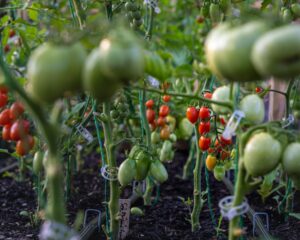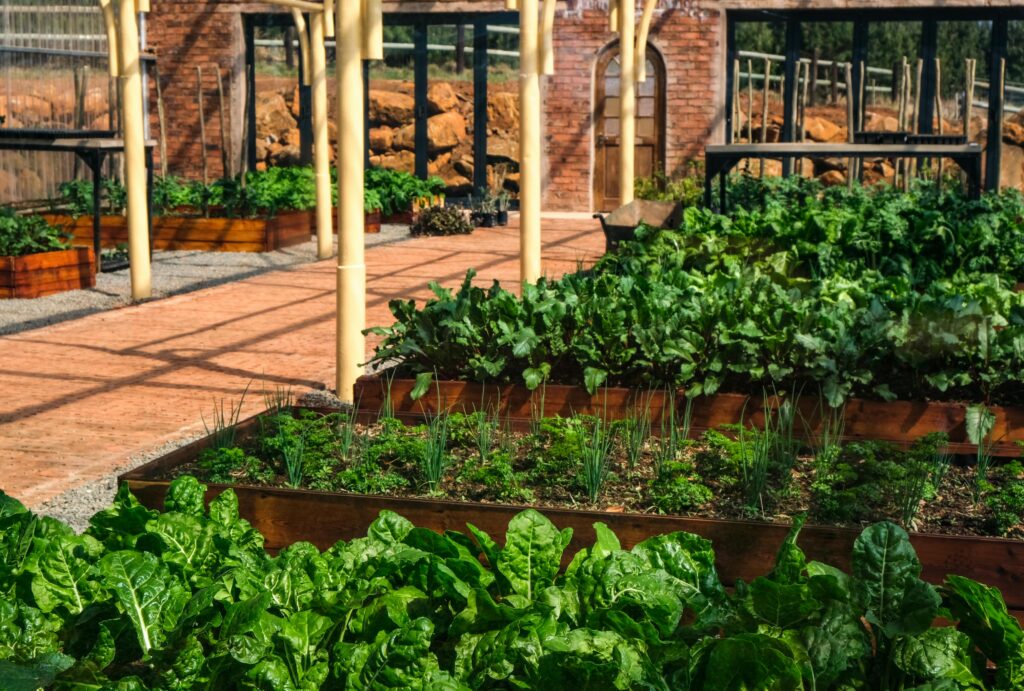Companion Planting Chart: Best Plant Pairings for Your Garden
Are you looking to grow a healthier, more productive garden naturally? Companion planting might be your answer. This age-old technique involves placing certain plants together to boost growth, repel pests, and improve flavor—all without harmful chemicals. In this comprehensive guide, we’ll walk you through the benefits of companion planting, provide a detailed companion planting chart, and offer tips to optimize your garden layout. Let’s dig in!
In this companion planting chart, you’ll discover the best plant pairings for vegetables, herbs, and flowers—along with combinations to avoid. Whether you’re a beginner or an experienced gardener, using these natural partnerships will help your garden thrive season after season.
What is Companion Planting?
Companion planting is the strategic placement of plants near each other to encourage mutual benefits. These benefits include:
- Improved pest control
- Enhanced growth and productivity
- Natural support (e.g., trellising)
- Better use of garden space
- Soil enrichment and protection
Some plants work as natural repellents, others enrich the soil with nitrogen, and a few even help improve the flavor of their neighbors.

Benefits of Companion Planting
1. Natural Pest Control
Certain plants repel pests when grown near susceptible crops. For example, marigolds emit a scent that keeps aphids and nematodes away from tomatoes.
2. Enhanced Growth and Yield
Some pairings improve plant growth by enhancing nutrient uptake or providing shade. Beans and corn are a classic example—beans fix nitrogen in the soil, while corn offers a natural pole for the beans to climb.
3. Weed and Disease Suppression
Ground-covering companions like thyme or oregano reduce weeds and protect the soil from diseases by creating a barrier.
4. Soil Health and Nutrient Cycling
Legumes fix nitrogen into the soil, benefiting leafy greens like lettuce and spinach.
Companion Planting Chart (Vegetables and Herbs)
Below is a detailed companion planting chart that includes popular vegetables, their best companions, and what to avoid.
| Plant | Best Companions | Avoid Planting With |
| Tomato | Basil, Marigold, Carrot, Onion, Garlic, Lettuce | Cabbage, Corn, Fennel, Potato |
| Carrot | Tomato, Lettuce, Chives, Peas, Leeks | Dill, Parsnip |
| Lettuce | Carrot, Radish, Strawberry, Onion, Basil | Parsley, Celery |
| Cucumber | Corn, Beans, Peas, Sunflower, Dill | Potato, Aromatic herbs like Sage |
| Corn | Beans, Peas, Pumpkin, Cucumber | Tomato, Celery |
| Potato | Beans, Corn, Cabbage, Marigold | Tomato, Cucumber, Sunflower |
| Peppers | Basil, Onion, Spinach, Carrot | Beans, Cabbage |
| Onion | Carrot, Beet, Lettuce, Strawberry | Peas, Beans |
| Spinach | Strawberry, Cabbage, Radish, Onion | Potato |
| Beans | Corn, Cucumber, Celery, Radish | Onion, Garlic, Fennel |
| Broccoli | Onion, Dill, Celery, Chamomile | Strawberry, Tomato |
| Cabbage | Onion, Garlic, Mint, Basil | Tomato, Strawberry |
Flower and Herb Companion Planting Guide
Some herbs and flowers serve multiple purposes: attracting pollinators, repelling pests, or improving soil.
| Herb/Flower | Benefits | Companion Plants |
| Basil | Repels mosquitoes, enhances tomato flavor | Tomato, Pepper, Lettuce |
| Marigold | Repels nematodes, beetles | Tomato, Beans, Potato |
| Chives | Deters aphids, improves carrot growth | Carrot, Tomato, Apple trees |
| Mint | Repels ants, aphids, flea beetles | Cabbage family (keep contained!) |
| Dill | Attracts ladybugs and pollinators | Broccoli, Cabbage, Corn |
| Nasturtium | Acts as a trap crop for aphids | Tomato, Beans, Cucumber |
| Thyme | Deters cabbage worms | Cabbage, Broccoli, Cauliflower |
READ ALSO: Foodscaping Made Easy: How to Turn Your Front Yard into a Beautiful, Edible Garden
The Three Sisters Method: Corn, Beans, and Squash
One of the oldest and most effective examples of companion planting comes from Native American agriculture. The Three Sisters method includes:
- Corn: Grows tall and acts as a support.
- Beans: Fix nitrogen in the soil and climb the corn stalk.
- Squash: Sprawls across the ground, shading weeds and retaining moisture.
This trio not only supports each other physically and nutritionally but also maximizes space and yield.

Tips for Successful Companion Planting
1. Know Your Plant Families
Avoid planting crops from the same family in the same spot every year. This reduces the risk of soil-borne diseases and nutrient depletion.
2. Understand Growth Patterns
Combine tall, sun-loving plants with shade-tolerant, shorter varieties. Example: Grow spinach or lettuce under taller tomato plants.
3. Use Trap Crops
Trap crops like nasturtium attract pests away from your main plants. This organic pest control strategy protects your veggies.
4. Incorporate Flowers and Herbs
Add flowering plants to attract bees and beneficial insects like ladybugs. Herbs like thyme and mint repel harmful bugs.
5. Experiment and Record
What works in one climate may not in another. Keep a garden journal to track which combinations perform best in your conditions.
What Not to Do in Companion Planting
1. Avoid Planting Incompatible Crops
Some plants can stunt the growth of others or attract shared pests. For example, tomatoes and corn should not be grown together as they attract the same pests.
2. Don’t Overcrowd Your Garden
Even with companion planting, plants need space for air circulation and root growth.
3. Don’t Ignore Soil Health
Just because plants get along doesn’t mean they won’t deplete the soil. Rotate crops and use compost to keep the soil healthy.
Seasonal Companion Planting Guide
Here’s a seasonal planting suggestion to help you rotate and maximize your garden output:
Spring
- Lettuce + Carrot + Onion
- Spinach + Strawberry
- Peas + Radish
Summer
- Tomato + Basil + Marigold
- Corn + Beans + Squash
- Cucumber + Dill
Fall
- Broccoli + Celery + Chamomile
- Cabbage + Garlic + Mint
This rotation helps manage pests naturally and improves soil fertility.
Companion Planting in Small Spaces
Even if you have limited space, companion planting can still work. Use containers, raised beds, or vertical planters to combine compatible crops:
- Container Idea: Tomato + Basil + Marigold
- Vertical Garden: Cucumber vines + Dill at the base
- Balcony Garden: Strawberries + Spinach + Chives
Maximize your productivity and beauty even on a balcony or small yard.
Conclusion
Companion planting is more than just a gardening trend—it’s a sustainable, proven method for improving plant health, controlling pests, and boosting yield. Whether you’re gardening in containers, raised beds, or a large backyard plot, knowing which plants support each other can transform your harvest.
Using this companion planting chart as your guide, start planning your next garden layout. Try different pairings, observe the results, and enjoy the benefits of a garden that thrives naturally.
FAQs About Companion Planting
Q1. Can companion planting really prevent pests?
Yes, many plants like marigold, basil, and mint emit natural oils or scents that repel pests like aphids and beetles.
Q2. Do I need to plant everything from seed for companion planting to work?
Not necessarily. You can mix transplants and direct seeding as long as their spacing and timing are compatible.
Q3. Is companion planting suitable for indoor or container gardens?
Absolutely! Container gardens benefit from companion planting, especially herbs like basil and thyme with vegetables like tomatoes or peppers.
Q4. How close should companion plants be?
They should be planted within 12–18 inches of each other for maximum benefit, depending on the plant size.
Q5. Can I use companion planting with flowers only?
Yes! Flowers like nasturtiums, marigolds, and sunflowers offer benefits such as attracting pollinators and repelling pests.


